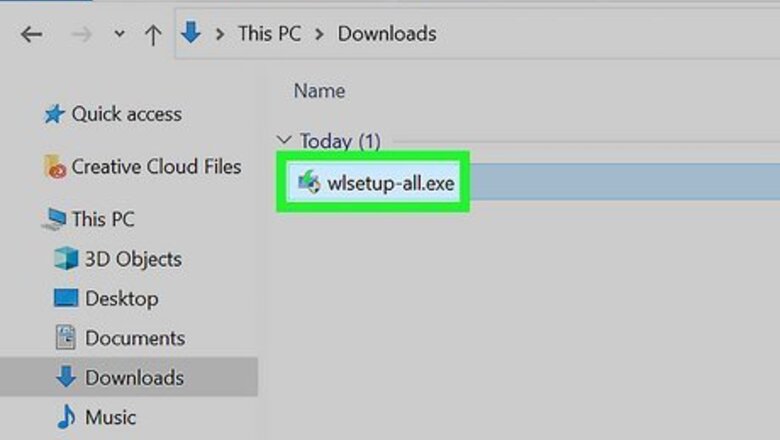
views
X
Research source
However, if you still want the import and editing features of Windows Live Photo Gallery, you can download an archived version of it through the Windows Live Essentials package. This wikiHow article teaches you how to acquire and use Windows Live Photo Gallery.
- Windows Live Photo Gallery was discontinued in 2017 and replaced with the Windows Photos app.
- You can still download Windows Live Photo Gallery as part of the Windows Live Essentials Package from Archive.org.
- Window Live Photo Gallery allows you to import, view, and edit photos using a simple interface.
Installing Photo Gallery
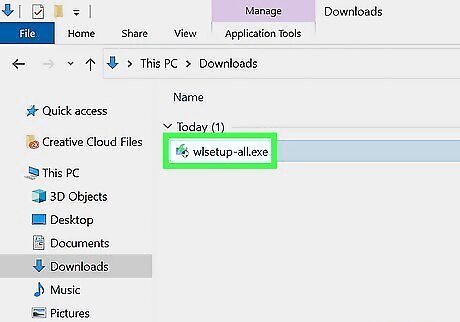
Download the Windows Essential Package from Archive.org. Windows Live Photo Gallery is no longer available for download from Microsoft. However, you can still download an old version of it using using the Wayback Machine on Archive.org. Click here to download the Windows Essentials setup file directly. Even though Windows Photo Gallery has been discontinued, it should still work on both Windows 10 and Windows 11. Be careful when searching for downloads from other websites. The downloads offered by other websites may contain viruses and malware.
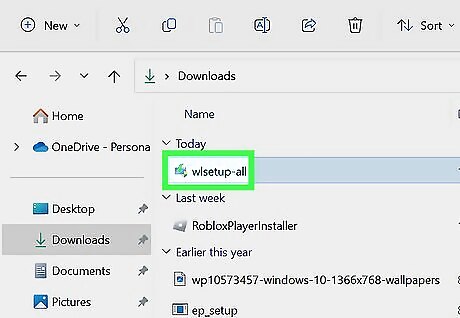
Open the Windows Essentials setup file. By default, your downloaded files can be found in your Downloads folder. Click the wlsetup-all.exe file in your Downloads file to launch the installer. Click Yes when prompted by the Windows access control pop to allow the installer to make changes to your system.
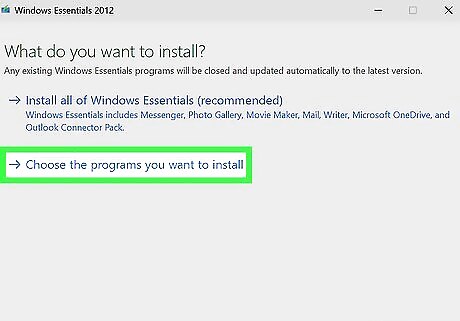
Click Choose the programs you want to install. It's the second option in the dialogue box. This allows you to pick which programs in the package you want to install. Alternatively, Install all of Windows Essentials (recommended) to install the entire Windows Essential package, which includes Messenger, Photo Gallery, Movie Maker, Mail, Writer, OneDrive, and the Outlook connector pack.

Uncheck the programs you don't want to install. If you don't want to install Messenger, Mail, Writer or OneDrive, go ahead and uncheck the box next to these programs. Leave the checkbox next to "Photo Gallery and Movie Maker" checked. With the exception of OneDrive, nearly all of the applications in the Windows Essential package have been discontinued and replaced with newer software.

Click Install. It's in the lower-right corner. This installs the apps that you selected.
Opening Photo Gallery
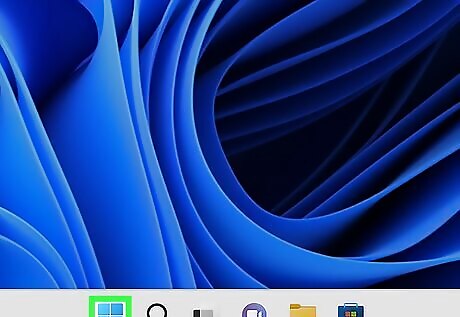
Click the Windows Start menu Windows Start. It's the icon with the Windows logo in the taskbar at the bottom of the screen. This displays the Start menu.
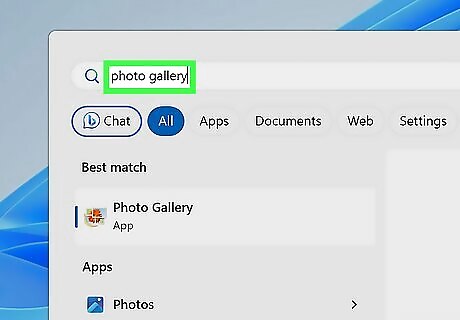
Type photo gallery. This displays the Photo Gallery app in the Start menu.
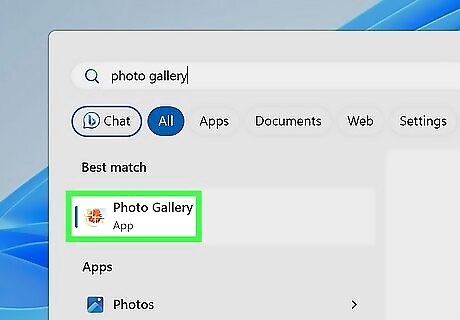
Click Photo Gallery. It has an icon that resembles four images coming together to make an image of a red flower. Click this icon to launch Photo Gallery. If you are asked to sign in with your email address, you can sign in with your Microsoft account, or click Cancel.
Importing Photos
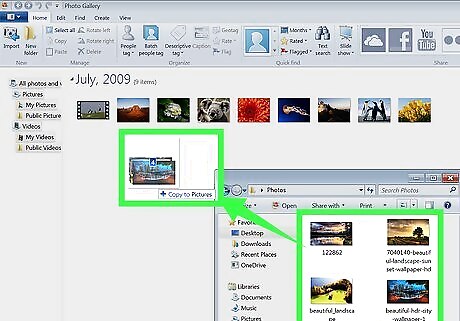
Add photos that are already on your computer. If there are photos already on your computer you wish to add, you can simply drag and drop them into the Windows Photo Gallery window.
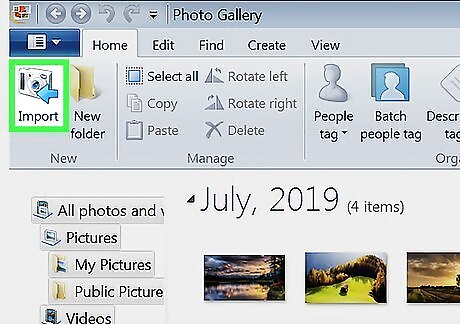
Import photos from a camera or other external device. Use the following steps to import photos: Connect your device, Click Home. Click Import. Click the device you wish to import pictures and videos from. Click Import.
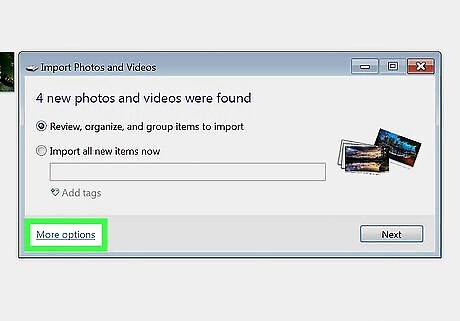
Select the destination for your imported photos (optional). To do so, click More Options and a dialog box will appear. Here you can click Browse to choose a destination folder, as well as select a naming scheme for the sub-folders and imported pictures (i.e. name + date, etc.). Click OK to confirm your settings The default destination for imported pictures is the “Pictures” folder (“My Computer > My Pictures” or “C:\Users\[username]\Pictures”).

Select an import method and click Next. From here there are two options you can select: “Import All New Items” or “Review, Organize, and Group Items to Import”. ”Import All New Items” will import anything from the source that does not already exist in the destination folder. ”Review, Organize and Group Items to Import” allows the user to select and arrange specific targets to import.
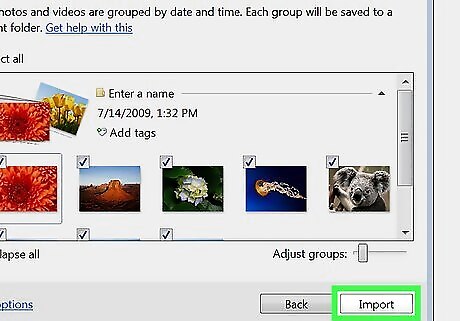
Click Import. When you are satisfied with images you have selected and how they are named and arranged, click Import. This will import the images into Photo Gallery.
Organizing and Sharing Your Photos
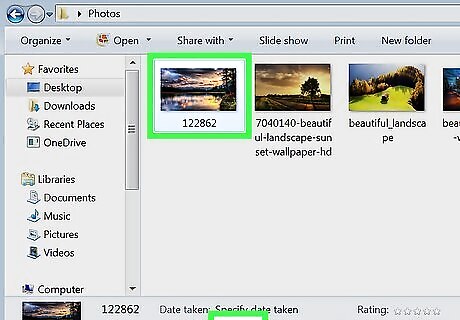
Organize items with tags and captions. You can apply tags to help you find and categorize your photos, while captions can add a little extra information and flavor to your library. To apply a tag, click the picture and fill in the tags in the pane to the right. You can add a tag for the names of people (who is this"), a geotag (location), a caption, and a description tag. If the Details pane does not appear, click Edit in the menu bar at the top and click Tag and caption in the "Organize" box at the top of the screen. Multiple items can be selected by either clicking and dragging or holding Ctrl and clicking individual items.
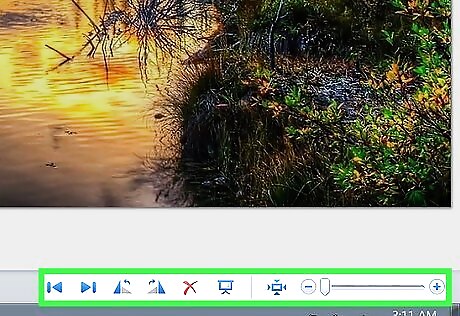
Use the bottom pane to navigate, make simple modifications, and showcase your photos. The buttons in the bottom pane allow you to zoom, rotate, navigate, or delete photos. You can also view selected items in a slideshow using the center button on the pane. You can exit a slideshow at any time with Esc. Slideshow filters can be applied in “Home > Slideshow”.
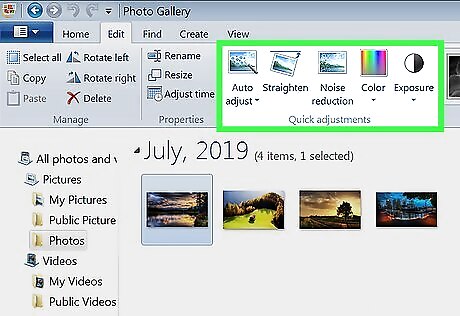
Edit pictures and fix common flaws. Some photo editing features can be performed on multiple photos at once. Windows Photo Gallery can automatically adjust picture brightness and contrast by selecting the target photos and navigating to Edit followed by Adjustments and Auto Adjust. Other automatic options include red eye removal and photo straightening. Manual editing can be done to single photos by selecting the photo and pressing Edit followed by Adjustments and Fine Tune. This will allow you to take control of the same editing tools to adjust photos to your personal specifications. You can undo any unwanted changes by clicking Revert to Original in the Edit tab.
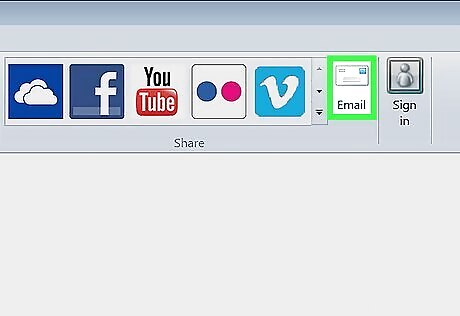
Share and print photos. Windows Photo Gallery can integrate with your hardware and email client to share your photos directly from the programs. You should make sure that your email client is configured and your printer is connected with up-to-date drivers prior to using them with Windows Photo Gallery. To email: Select any items you wish to send, and then click Home followed by Share followed by Email. Select the desired size of the photos and click Attach. Your default email client will automatically launch and open an email with the photos attached. To print: right-click an item and click Print (alternately, press Ctrl + P). The print dialog box will appear. Here you can select a size, layout, and number of copies of your selected photos. Click Print to proceed with your selection.
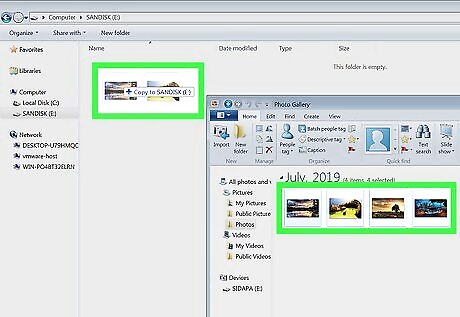
Export your photos to external storage. Connect your external storage device to the computer. Then, simply drag and drop your desired photos from the gallery or folder location, into the desired destination on your external device.














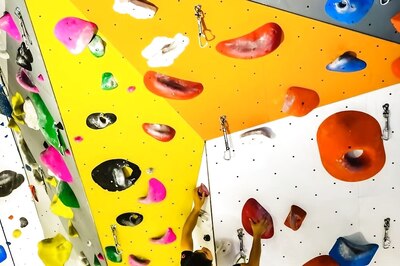





Comments
0 comment